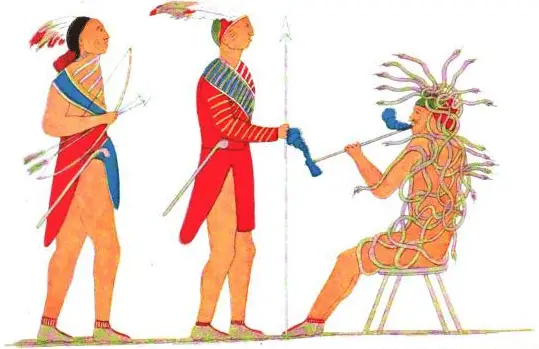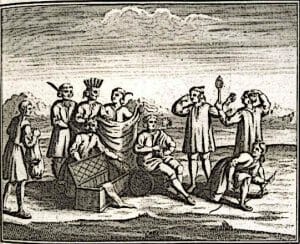Iroquois Confederacy
Introduction
The Iroquois Confederacy, which is also referred to as the Haudenosaunee, was created in the 17th or 18th century. It played a vital role during the conflict between the British and French. Both of them wanted to expand their settlements in North America.
The Iroquois Confederacy is also the oldest democratic government in the North America. In comparison to other tribes, the Iroquois were better organized and more active. They made use of ritualized systems for decision-making purposes.
By the 1750s, the Iroquois had succeeded in conquering the Piedmont area. They also established a trading relationship with the English and the Dutch. During the 17th century, they became bitter enemies of France. Eventually, the Iroquois Confederacy fell in 1779.

The Six Nations
Originally, the Iroquois Confederacy was comprised of five tribes. These included the Mohawk, Oneida, Onondaga, Cayuga, and Seneca tribes. They were called the Five Nations. In 1722, the Tuscarora Tribe joined the Confederacy and it became known as the Six Nations. After that, the Iroquois Confederacy went on to conquer other lands.
The Establishment of the Confederacy
Dekanawida and Hiawatha had wanted to eliminate inter-tribal warfare. They proposed their message of peace to the five nations and succeeded in uniting them. This led to the formation of the Iroquois Confederacy. The Great Law of Peace became the basis for the Confederacy’s constitution.

The Great Law of Peace
The Iroquois Confederacy Constitution was also referred to as the Great Law of Peace. It united all the nations and protected the liberties of every tribe as well as every individual. Along with this, all hunting areas and raw materials were to be shared among the nations.
Every religion was accepted, unauthorized searches were not allowed, and if someone wanted to join the Confederacy, they were welcomed. It did not matter what ethnicity a person belonged to, he or she could become a part of the Confederacy. This constitution also covered the justice system, rights/obligations, and peace among individuals/ groups. Cannibalism was also banned as per the law.
Conflict with the French
During the 17th century, the French and the Iroquois Confederacy had a series of battles. The French had allied themselves with the Algonquins and Hurons. After eliminating the Hurons, Iroquois launched a series of raids on France.
Years later, Marquis de Denoville launched an attack on the Iroquois. In response, the Iroquois destroyed the Lachine area. The France Governor Comet De Frontenac from 1693 to 1696 launched a series of successful campaigns against the Iroquois. These ended the conflict between the Confederacy and the French.
Defeat of 1779
The American Revolution took place in 1775 and created a split in the Iroquois Confederacy. The Oneida and Tuscarora sided with the revolutionaries whereas the Mohawk, Seneca, Onondaga and Cayuga tribes remained loyal to the British. In 1779, U.S. General John Sullivan, along with 4000 soldiers, launched an attack on the Confederacy and they were defeated in New York.
The Iroquois surrendered, and after ten years a treaty was signed between the two parties. It stated that the Confederacy and the USA wouldn’t interfere with each other. The Onondaga, Seneca, and Tuscarora along with a few Oneida members, stayed in New York. The Mohawk and Cayuga migrated to Canada. After a while, some members of the Oneida tribe settled in Wisconsin while others moved to Ontario.

